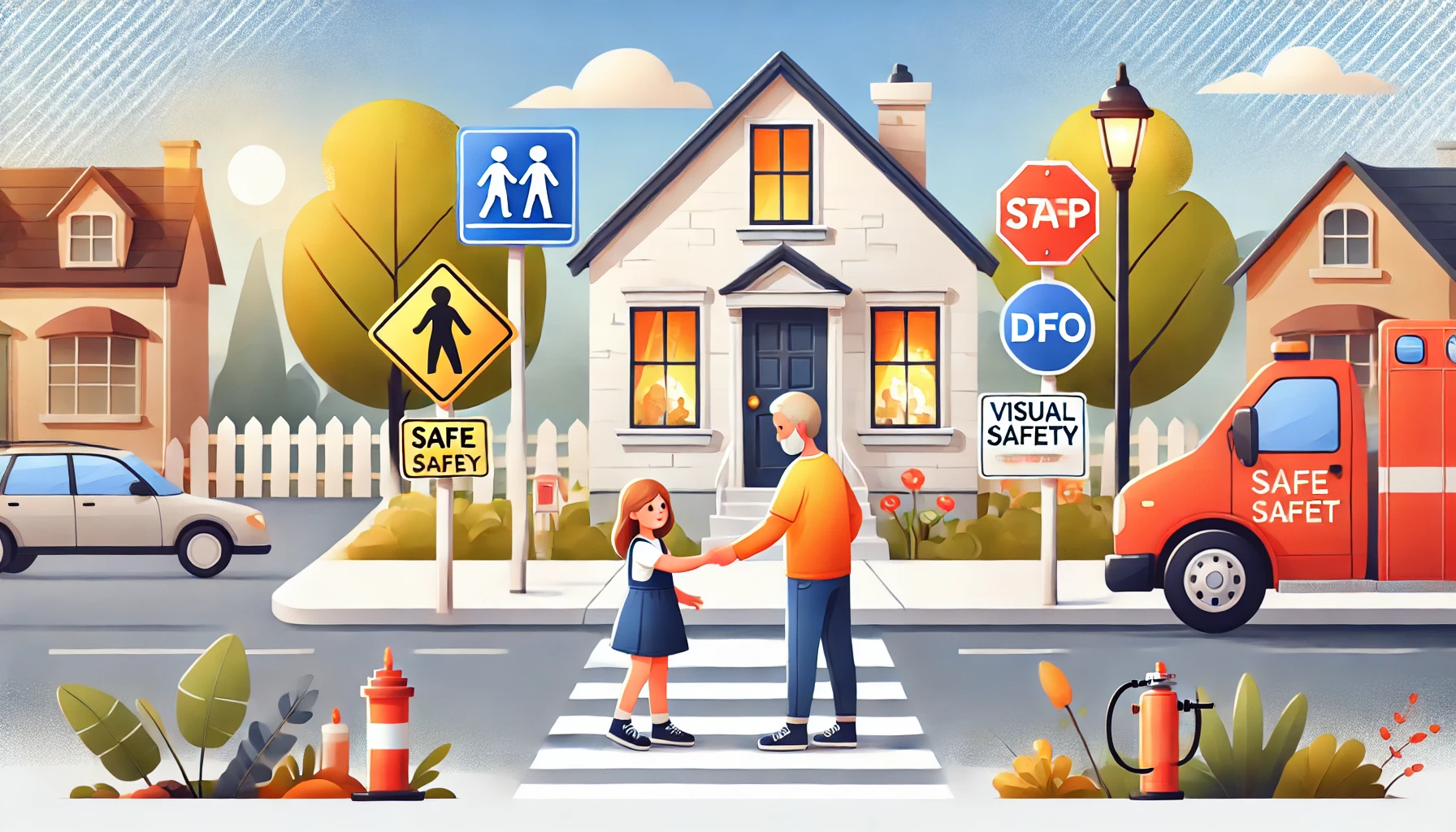How to Teach Young Children About Staying Safe in Different Situations
Teaching young children how to stay safe in various situations empowers them with the knowledge and confidence to make smart choices. From crossing the street to interacting with strangers, kids benefit greatly from early safety education tailored to their age and understanding. With simple language, role-play, and supportive routines, parents can help children develop lifelong safety habits.
Why Safety Education Is Essential
- Builds confidence – Helps children feel secure in new environments.
- Promotes independence – Prepares kids to make smart decisions on their own.
- Reduces risk of accidents – Teaches caution and awareness.
- Encourages communication – Fosters trust in asking for help when needed.
- Lays the foundation for lifelong responsibility – Sets the stage for safe habits.
1. Teach Full Name, Address, and Parent Contact Information
Knowing personal details can help children in emergencies.
Activity Idea:
- Create a fun song to help your child memorize their full name, address, and your phone number.
- Practice saying it during pretend play: “You’re lost at the store—what can you tell the helper?”
- Make a small, laminated card for their backpack with this info.
What Kids Learn:
- Who they are and how to help others contact you.
- How to stay calm in unfamiliar situations.
- That being prepared makes them feel safe.
2. Discuss Safe vs. Unsafe Strangers
Help children understand that not all strangers are dangerous—but caution is always wise.
Activity Idea:
- Teach the phrase: “If I’m lost, I look for a safe adult—like a person in uniform or a mom with kids.”
- Role-play stranger scenarios at home using toys or puppets.
- Use books or videos to reinforce “stranger danger” concepts without causing fear.
What Kids Learn:
- When it’s okay to talk to a stranger.
- What to do if someone approaches them or makes them uncomfortable.
- That asking for help from the right people is smart and safe.
3. Practice Safety at Home
Everyday objects can be dangerous without guidance.
Activity Idea:
- Walk around your home and point out items that are “safe” vs. “only for grown-ups.”
- Teach rules around outlets, stovetops, scissors, medicine, and cleaning products.
- Role-play what to do if there’s smoke, fire, or a spill.
What Kids Learn:
- That certain things should only be used with adult help.
- How to avoid hazards.
- The importance of following safety rules indoors.
4. Teach Road and Outdoor Safety
Being outside brings freedom—and risks.
Activity Idea:
- Practice holding hands when walking near roads or in parking lots.
- Teach the rule: “Stop. Look. Listen.” before crossing the street.
- Go on walks and quiz your child: “What do you do when the light turns red?”
What Kids Learn:
- That outdoor spaces require attention and caution.
- How to navigate streets, parks, and sidewalks.
- That adult guidance keeps them safe in public places.
5. Create Simple Emergency Plans
Having a plan gives children a clear path if something goes wrong.
Activity Idea:
- Make a basic fire escape plan and practice it.
- Choose a family “meeting spot” in case you get separated outside.
- Teach them how and when to call emergency numbers like 911.
What Kids Learn:
- How to respond calmly during emergencies.
- That preparedness helps solve problems.
- When and how to seek help quickly.
6. Encourage Speaking Up About Unsafe Feelings
Teach kids to trust their instincts and talk about their feelings.
Activity Idea:
- Role-play situations like: “What if someone tells you to keep a secret that makes you uncomfortable?”
- Practice responses like: “No, I don’t like that,” or “I need to tell my parent.”
- Let them know: “You can always tell me anything, even if you’re scared.”
What Kids Learn:
- That their feelings matter and should be listened to.
- How to assert boundaries safely.
- That open communication builds safety and trust.
7. Use Positive Reinforcement to Build Safe Habits
Encouragement helps children internalize lessons.
Activity Idea:
- Praise your child when they follow a safety rule: “I saw how you looked both ways before crossing—great job!”
- Use a “Safety Star” chart to reward good habits.
- Reflect on safe choices during bedtime chats.
What Kids Learn:
- That safety is something to be proud of.
- How to build confidence by doing the right thing.
- That responsible behavior is recognized and valued.
8. Model Safe Behavior in Your Own Life
Children copy what they see.
Activity Idea:
- Narrate your own safe actions: “I’m buckling my seatbelt to stay safe in the car.”
- Avoid shortcuts (like jaywalking) that contradict what you’ve taught.
- Let them help enforce safety: “Can you remind me what we do before we cross?”
What Kids Learn:
- That safety is for everyone, not just kids.
- How adults stay mindful in daily routines.
- That safe choices are a shared responsibility.
Final Thoughts
Teaching young children how to stay safe in different situations gives them confidence, awareness, and essential life skills. With consistent practice, calm conversations, and engaging activities, parents can help kids feel secure while giving them the tools they need to make smart, safe decisions every day.
